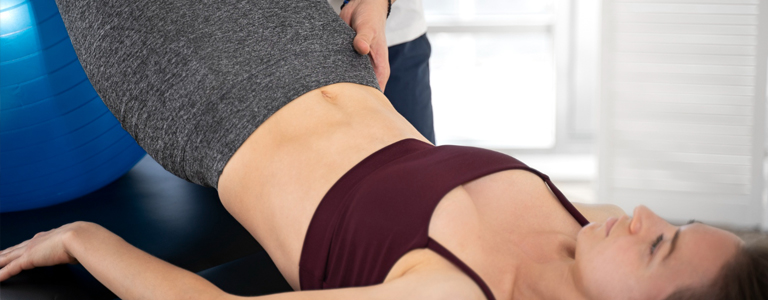Most Americans will experience temporary back pain at some point in their lives. When back pain isn’t temporary and lasts a long time, it becomes a major quality of life issue. Dealing with chronic back pain can seriously take a toll on your mood when you experience it constantly.
The good news is that you don’t have to suffer from back pain for the rest of your life. In the long run, adopting a positive attitude, such as consulting a physical therapist, will help you find relief from back pain!
For more information on how physical therapy can help you with your back pain, please contact Good Hands Physical Therapy. Continue reading to find out more about the different types of back pain and how physical therapy can help!
What are the different types of back pain?
Most of the time, back pain is usually not serious and will resolve on its own. Recurring pain and chronic pain, however, can be a sign of a more serious health problem.
There are three main types of back pain:
- Recurrent Back Pain: This occurs when acute back pain goes away for a while, but then comes back periodically.
- Acute Back Pain: Acute back pain is the most common type. This is a temporary pain that goes away in less than three months.
- Chronic Back Pain: If back pain lasts longer than three months without subsiding, it is classified as chronic.
There is a broad range of potential physical conditions that could be causing your back pain, which includes the following:
- A herniated disk
- Fractures
- Lumbar spinal stenosis
- Osteoporosis
- Degenerative disk disease
Diagnosing your pain with physical therapy
Your journey with a physical therapist will begin with a discussion of your symptoms. Your therapist will also look over your medical history for any prior injuries or illnesses that may have contributed to your current discomfort. Your physical therapist will also evaluate your ability to walk and function.
Some tests are performed to find signs of more severe conditions and will also require a diagnosis. You will most likely be referred to a doctor for further examination if your physical therapist believes that there is a significant health problem that leads to your back pain. This will not be necessary in most cases, however.
What should I expect with physical therapy?
PT is nothing to be scared of. A personalized course of physical therapy will be created for you once your back pain has been diagnosed. Back pain treatments differ depending on the diagnosis, age, weight, physical ability, and other factors. Any of the following treatments may be used as part of your treatment plan:
- Hot or cold treatments, or electrical stimulation, for pain relief
- Posture work to provide better support for your back
- Manual therapy and spinal manipulation to improve joint mobility and relieve tissue pain
- Education on how to take better care of your back, such as proper methods of lifting, bending, sitting, and sleeping positions
- Stretching and strength-building exercises
One of the most important aspects of working with a physical therapist is learning movement and daily task strategies that will help you avoid recurrent pain.
Throughout your physical therapy treatment, your progress will be monitored to ensure that you are recovering. The goal is to get rid of your back pain so you can resume your normal routine.
A physical therapist will demonstrate proper posture techniques for you to use at home, at work, or while participating in leisure activities.
You’ll also learn how to maintain a regular exercise routine to keep your supporting muscles strong and prevent back pain from returning. If your weight is causing your back pain, you’ll get nutritional advice as well as exercise tips to help you lose weight and keep your back pain at bay.
Back pain prevention tips
A little prevention goes a long way. If you want to avoid future back pain, you can make sure you’re being good to your back. Below are a few ways you can adjust your movements to prevent back pain from occurring.
Lift Properly
You pick things up constantly. Even if you’re lifting something light, make sure you’re facing the object. Squat and keep your spine straight. Lift with your leg muscles, as this will reduce the pressure placed on your spine.
Use Good Posture
When you’re standing, imagine a string is attached to the top of your head—lifting you. This will keep your hips, spine, shoulders, and neck aligned. If you’re sitting, don’t slouch over your work or screen.
Strength Training
There are hundreds of muscles in your body. Your spine is protected and controlled by these muscles. You can keep them strong by lifting weights, running, and swimming. Strengthen the muscles in your core. You’ll be able to easily control quick, lifting movements this way.
Make an appointment with us today
The key is to be proactive in standing up to your back pain. If the pain lasts longer than three months, it probably won’t go away on its own. Call Good Hands Physical Therapy today to schedule your first appointment with a physical therapist.
Tags: Chronic Back Pain, Natural Pain Relief, Natural Treatment, Back Pain, Good Hands Physical Therapy, physical therapist, physical therapy, Back Pain Relief















